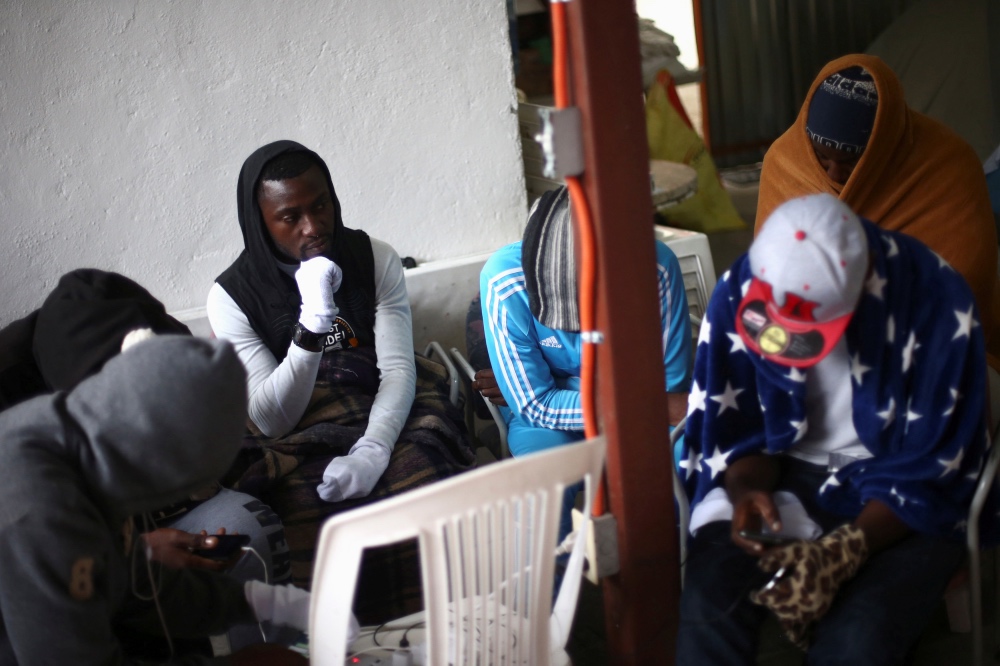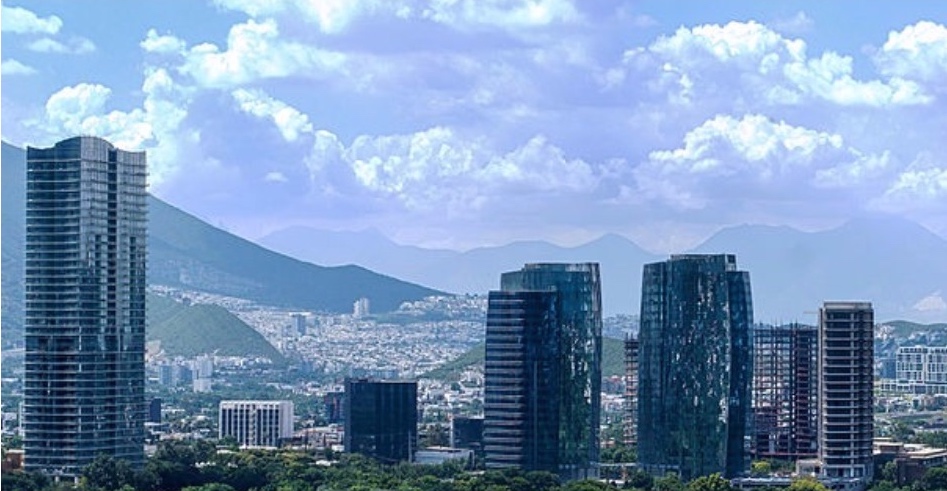
OSCAR LOPEZ, of Thomson Reuters Foundation, reports on the struggle facing refugees living in Mexico…
Mexico City, Mexico
Thomson Reuters Foundation
Aurelien crossed seas and treacherous jungles for a better life – but the social cost has proved high. No family, no friends, not even a bed or day off for this refugee from Cameroon.
And his is a relative success story.
“My goal was to bring my family here, but…I couldn’t get enough money together,” Aurelien, who did not use his real name, told the Thomson Reuters Foundation from his new Mexican home.
“Living without them is like being in hell.”

Migrants from Cameroon gather as they protect themselves from the cold inside the Juventud 2000 shelter in Tijuana, Mexico, on 14th March, 2018. PICTURE: Reuters/Edgard Garrido –
With the number of refugees doubling over the past ten years, the United Nations is battling to help migrants like Aurelien eke out a basic living while confronting the challenges of settling into a new life far from home.
The 38-year-old, who moved to Mexico City in 2017, was earning $US300 a month working in construction. When he realised this would never meet the cost of bringing over his family, he changed tack.
“My goal was to bring my family here, but…I couldn’t get enough money together. Living without them is like being in hell.”
– Aurelien, a refugee from Cameroon now living in Mexico.
Last month, Aurelien joined the 4,000 plus refugees and asylum seekers relocated this year by the United Nations’ refugee agency, UNHCR, to northern Mexico, where wages are higher.
“[Now] my dream is a life in Monterrey with my children,” he said, referring to the northern manufacturing city of four million that is now home.
The UNHCR program, begun in 2016, aims to mitigate one of the most persistent conundrums of Mexico’s refugee crisis: while most asylum seekers arrive in the country’s rural south, the greatest economic opportunities lie in the industrial north.
It is these kinds of challenges that will occupy the inaugural Global Refugee Forum, a two-day United Nations conference to be held in Geneva later this month.
The forum will explore how to help host countries cope, as well as settle refugees, whose numbers have swelled to over 25 million in the past decade.
Mexico is a case in point.
Once a transit country to the United States, violence in Latin America and an increasingly strict US immigration policy has turned Mexico into a refugee destination, too.
According to Mexico’s refugee agency, COMAR, the number of asylum applicants has already doubled this year from 2018.
Of these, two-thirds applied for asylum in the southern border state of Chiapas, where some 75 per cent of people live in poverty, according to the government. In the northern state of Nuevo Leon, where Aurelien is now, the figure is only 14.5 per cent.
“There are regions of the country that have all the capacity to not just receive arriving migrants, but to receive them without any problem,” said COMAR coordinator general Andres Alfonso Ramirez Silva.
“[But] the door of entry…is the poorest state.”

Panoramic view of the city of Monterrey in Nuevo Leon, Mexico. PICTURE: Microstar (licensed under CC BY-SA 4.0)
A strong manufacturing sector saw Nuevo Leon’s economy grow 2.3 per cent in the second quarter, while Chiapas is in recession.
“There are a lot of economic opportunities [in Nuevo Leon],” said Gabriela Zamora, an attorney at Casa Monarca, an NGO in Monterrey working with UNHCR to resettle refugees.
“The manufacturing industry, the construction industry, these are the industries that have the most growth and they’re the types of jobs that refugees are looking for.”
According to UNHCR, if all asylum seekers in Mexico entered the formal workforce, it could generate some $US6 million in extra economic output in six months.
“Indirectly, the system of refugee protection in Mexico would be self-financing.”
– Florian Hopfner, who works for the United Nations refugee agency in Mexico.
The tax revenue could then support the country’s inundated refugee agency, said Florian Hopfner, who works for the United Nations refugee agency in Mexico.
“Indirectly, the system of refugee protection in Mexico would be self-financing,” Hopfner said.
Hector Garcia manages a family-owned timber business called Triplay Azteca and said he recently tried to hire refugees.
“We were struggling to find workers. People would just come and go,” he said. “So we had the idea..why didn’t we hire foreigners, especially Central Americans?”
A practical solution to his problem, plus the pastor felt it was the right thing to do.
“It’s my moral responsibility, not just as a human being, but as a citizen, and in my case as a Christian,” he said.
So Asylum Access, an advocacy group, hooked up Garcia with two Honduran asylum seekers.
After a day’s work, neither man returned.
“It was a bit disappointing,” Garcia conceded.
Asylum Access said the commute was too far for the Hondurans, a typical obstacle given the city sprawls and has limited transport.
It takes Cameroonian refugee Aurelien two hours to reach the slaughterhouse where he works; he often doesn’t get home until after midnight.
“It’s really tough,” he said. “But I don’t have a choice.”
He’s more relaxed in Monterrey than in the suffocating chaos of Mexico City, where his life, he said, felt stagnant. The wages are better too – he now earns about $US500 per month.
But life remains a struggle. Aurelien works a seven-day week and lives in a bare apartment on the edge of town with only a stove and fridge for furniture.
As for bringing over his family?
“Hope has disappeared,” he said. “I’m waiting for a true miracle from God.”





